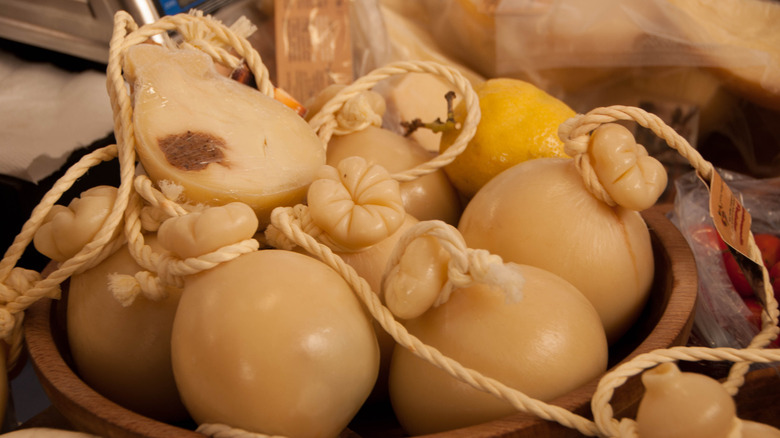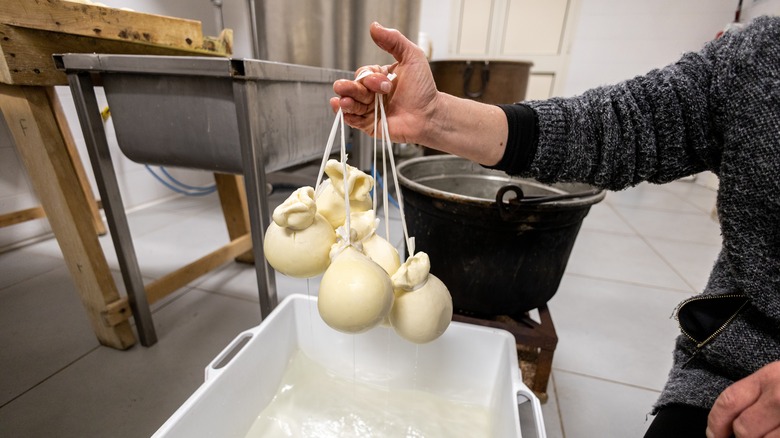Italy's Caciocavallo Podolico, Or Horse Cheese, Isn't What It Sounds Like
What's the first thing that pops into your head when you hear the word "horse cheese"? If you're thinking what we think you're thinking, then the good news is that the good people of south Italy didn't milk their horses to make Caciocavallo Podolico, which translates to "horse cheese." Instead, this sweet cheese, with a spicy and slightly herbal aftertaste and an intense aroma of milk and straw, is made from a breed of cows that are unique to this region, called "Podolica," known for their dark grey hide and large horns. While they don't produce large quantities of milk (only about 3 to 6 liters of milk daily,) the milk they do produce is incredibly rich in proteins and fats, resulting in a uniquely flavorful cheese. Sadly, the Podolica breed is becoming quite rare, with only about 25,000 of them remaining.
Besides the special breed of cow that its milk is sourced from, Caciocavallo Podolico is made even more exclusive by its lengthy aging process, which can span anywhere from a few weeks to a decade. All of these factors contribute to its price tag, which is among the most expensive in the world, reaching up to $50 per pound.
But then, what's the deal with the name? Because the traditional aging method involves hanging the cheeses in pairs on a wooden beam, which, from below, looks like saddlebags on a horse's back, the playful name of "horse cheese" came about.
How is Caciocavallo Podolico made and how do you serve it?
Caciocavallo Podolico cheese is part of the same family of stretched-curd cheeses as mozzarella and provolone. And just like these cheeses, Caciocavallo Podolicoare is made by kneading and shaping the curds in hot water.
First, the milk from Podolica cows is heated to around 100 degrees Fahrenheit. When the temperature's right, the cheesemaker adds rennet (a milk-curdling enzyme) along with fermented whey. After about 20 minutes, the milk turns into curds, which are cut into small pieces by the cheesemaker using a tool called "menaturo" into chunks the size of rice grains. These curds are then left to rest in their own whey for an hour to enhance their flavor. Next, the curd is stretched and shaped by hand in hot water to give the cheese its unique bottle-like form. After shaping, the cheese is set aside to age, with aging times ranging from six weeks to an impressive 12 years for the most exclusive wheels.
Caciocavallo Podolico is best eaten fresh at room temperature, which will allow its rich flavors to shine. You can pair it with a strong-tasting local red wine like Aglianico del Vulture or Cannonau di Sardegna, which can complement the "piccante" (sharp-tasting) cheese. Prefer a milder taste? Try it with nuts and honey to balance out the cheese's strong flavor.

